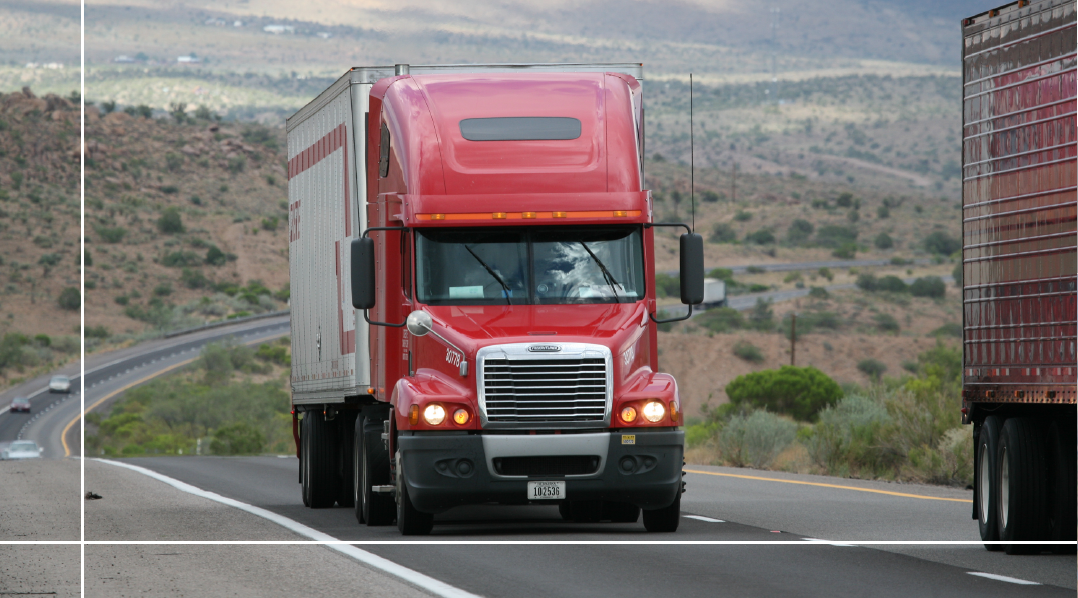Long haul drivers have a tough job, as they are on the road for long periods of time, traveling...
Essential Safety Tips For Truck Drivers
Trucking is one of the most difficult and dangerous jobs out there. We know that life on the road can be full of surprises and hard times. Handling a big rig requires skill, patience, and the ability to be prepared for anything. The smallest things can make a big difference when you’re on the road. For a professional truck driver, safe driving is a top priority, but making it happen can sometimes be more challenging than anticipated. However, there are ways to stay prepared and focused. Take into account some of these easy methods to help you stay safe on the road and ready for anything!
Regularly Inspect Your Equipment
You will want to make sure you have a consistent schedule for checking all your equipment, so you can ensure that every part is in its working order. When you drive a big rig for a living; your tires, brakes, steering wheel and lights are essential in keeping you and others safe. When you keep up on top of regular checks of each of these components, you can identify and fix problems before they become an issue.
Make a checklist and regularly check off the items once you’ve inspected these areas. It may take up a bit of time, but it will save you a lot in the long run in terms of any potential repair money, time off the road and most importantly protecting your wellbeing and life. Your pre trip and post trip inspections are essential. Some of the key tasks you want to complete on a regular schedule, and often, are:
- Inspecting the vehicle (brakes, lights, tires, steering wheel, etc.)
- Maintain optimal tire pressure
- Conduct regular oil changes
- Consult the driver reports regularly
- Make it a habit to occasionally research any recalls or warnings about your truck model or build
Do Not Drive Tired
You want to make sure you are following the HOS (Hours of Service) rules, not only from a regulation standpoint, but especially because these rules are in place to protect the driver and allow them necessary breaks. HOS rules outline how many hours you can drive, as well as any mandatory breaks needed. Suspensions and fines can result from not adhering to HOS rules so be cautious and make sure you are planning ahead in terms of parking, for when you run out of hours.
It is important to give yourself a break at the very least every 6-8 hours of driving. If your trips are longer, then a general rule is to take a break about every 2 hours or so. When you get adequate rest, you are more alert and are better able to safely handle your rig. One of the major causes of accidents in truck drivers has been fatigue, so make sure you listen to your instinct and notice when you are losing concentration. A short nap or break can make a big difference.
Use Technology To Prepare
In this day and age, truck drivers have access to the Internet and all sorts of technological apps that can predict or inform about the weather, road conditions and which paths to avoid. Software will often look at real-time data, which allows drivers to plan ahead and prepare for any traffic jams, hazardous conditions or delays. You can optimize your schedule while keeping yourself safe. You can use Drivewyze Safety+, Trucker Path, and other common apps to help you know where weigh stations are coming up, and stay ahead of any changing conditions you may be heading into.
-1.png?width=1626&height=792&name=Brown%20Microphone%20Simple%20Photography%20Podcast%20Show%20Brown%20Microphone%20Simple%20Photography%20Podcast%20Show%20Facebook%20Cover%20(11)-1.png)
Limit Distractions
Your best for keeping safe on the road is to limit anything which may take focus off the road and your task at hand, which is driving. Your phone should not be used while driving, but if you must use it for GPS or podcasts/music, then make sure you have a holder attached somewhere so that it is not in your hands and you are not actively looking at it instead of the road. Try not to play music too loud, as you can miss the sound of horns, emergency vehicles or other issues happening around you.
Practice Defensive Driving
Your instincts will be your best bet when it comes to driving and stopping safely. If you are not sure if you will make it at a certain stopping point, then try to brake early. Large trucks require more stopping distance and time, so if you find yourself uncertain about your surroundings, the lights or the road ahead; then practice the early technique to be safe.
Preparing early is essential when driving in winter months, because black ice and snow can accumulate and cause a loss of control. Keep in mind the potentials of what can occur, in order to drive at your best. Always use your turn signals, as other drivers can be in your blind spots. Never assume you are the only one on the road. Be mindful of other drivers who may not be as skilled as you, because your rig is much bigger and more dangerous, so it’s worth a little bit of effort to make sure you stay safe.
Don’t Bet Your Life on Automation
While technology allows new updates to vehicles, it is important to still use your skills whenever you are behind the wheel. If your truck has sensors or special safety features, it is still important to double check and stay in control yourself, as technology can still potentially fail. Allow your common sense to precede any automatic feature your car has. Do not use cruise control in winter weather conditions or areas with high traffic, construction zones or hills.
If you drive a truck, you know that the job is hard and it can be dangerous. It takes skill, patience and mental toughness to handle a big rig. But there are a few easy things to do to keep you safe on the road. Sometimes, being a trucker can be a little bit more than driving. When you know what to look out for, you can stay prepared for anything.

.jpg?height=200&name=Black%20and%20White%20Photographer%20Portfolio%20Presentation%20(1).jpg)

.jpg?height=200&name=White%20Minimalist%20Aesthetic%20Magazine%20Photography%20Portfolio%20Presentation%20169%20(39).jpg)